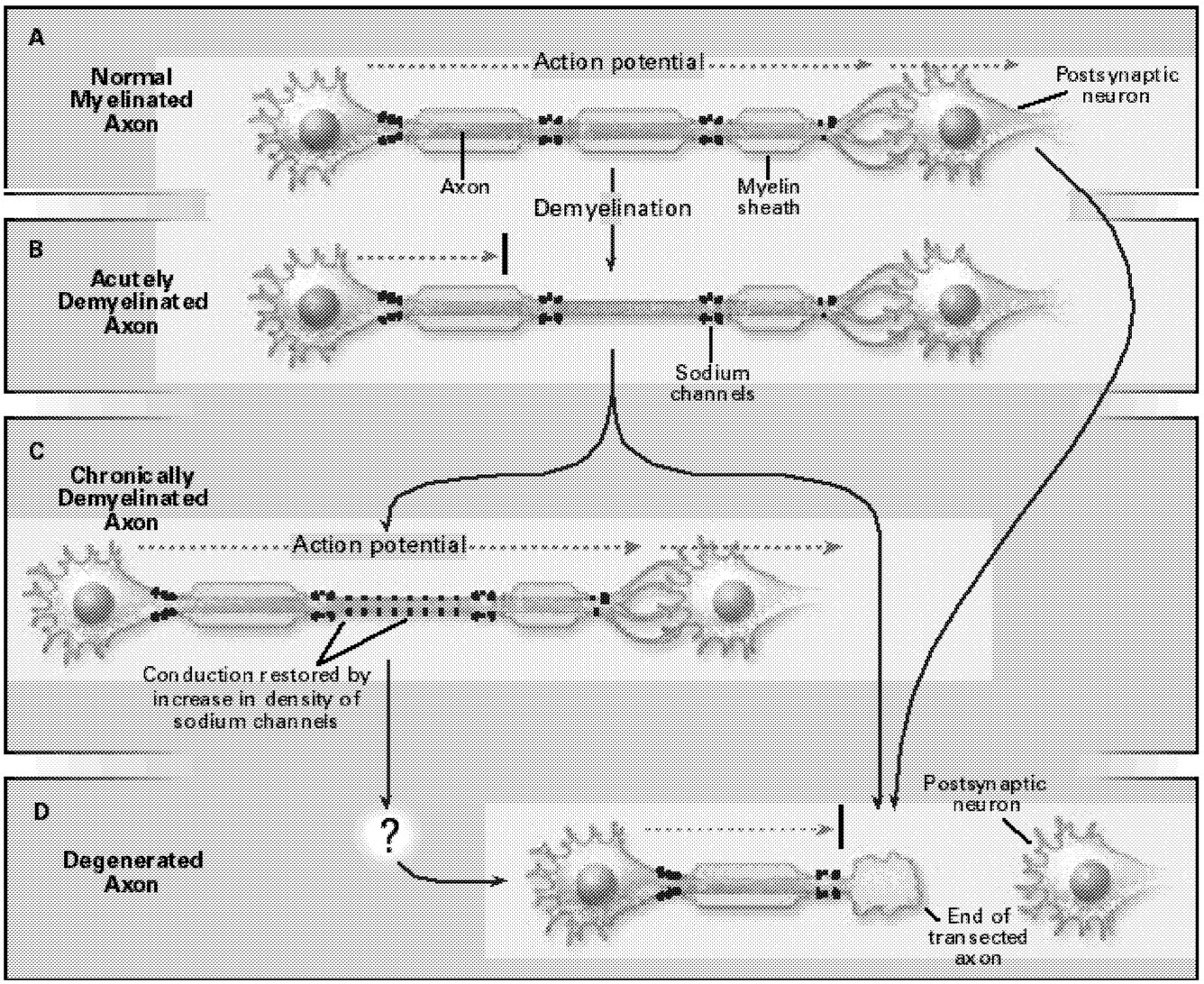
Antibody-Based
Strategies for
Spinal Cord Remyelination
Background
Myelin is a fatty substance produced by oligodendrocytes that
surrounds axons and allows propagation of action potentials along those axons in
a phenomenon known as saltatory conduction. Myelin is the major component
of the "white matter" of the spinal cord.
As shown in Figure 1 (below),
axons that are demyelinated have difficulty propagating an action potential,
which prevents signals from reaching their intended targets [3].

It has been known since a 1961 paper by Mary and
Richard Bunge that the spinal cord does, in fact, spontaneously remyelinate
[4]. However, conventional wisdom continues to hold that due to the
inability of oligodendrocytes to undergo mitosis, new myelinating cells in the
spinal cord cannot be produced.
Most current strategies focus on
restoring oligodendrocyte differentiation, or inducing differentiation
of oligodendrocyte precursor cells, to allow for the creation of
new myelinating cells and the production of new myelin.